1.Pringles
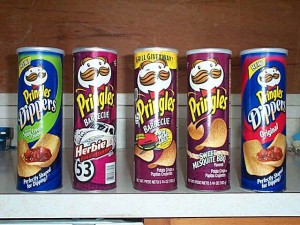 Pringles are not actually 100% potato chips. They contain only 42% potato. Remaining items include corn flour, rice flour and other crisping agents. Manufacturers suggested the name, “Pringle Newfangled Potato Chips” but it was rejected by the FDA ( Food and Drug administration) because of low potato content. Later, they changed the name to, “Potato crisps” but they still had to suffer in the market. At last, the current name, “Pringles” was chosen. So before fatty people can enjoy the chips in the form of pringles because it contains low potato and, hence, lower levels of starch.
Pringles are not actually 100% potato chips. They contain only 42% potato. Remaining items include corn flour, rice flour and other crisping agents. Manufacturers suggested the name, “Pringle Newfangled Potato Chips” but it was rejected by the FDA ( Food and Drug administration) because of low potato content. Later, they changed the name to, “Potato crisps” but they still had to suffer in the market. At last, the current name, “Pringles” was chosen. So before fatty people can enjoy the chips in the form of pringles because it contains low potato and, hence, lower levels of starch.
2.Pop rocks
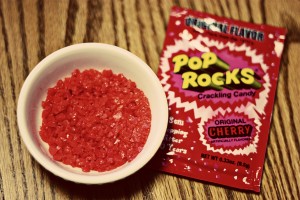 You must have experienced, “pop rocks” at least once in your childhood. This is one of very few eating products that give you something more in addition to food. That is the popping of the little grains. Everyone enjoys that popping but have you ever thought that what is the mechanism behind this popping? Here’s the brief explanation of the mechanism of action that you would love to know
You must have experienced, “pop rocks” at least once in your childhood. This is one of very few eating products that give you something more in addition to food. That is the popping of the little grains. Everyone enjoys that popping but have you ever thought that what is the mechanism behind this popping? Here’s the brief explanation of the mechanism of action that you would love to know
Main ingredients of pop rocks are sugar, corn, syrup, flavoring agents, permitted food colors etc. These ingredients are thoroughly mixed together to form an amalgam. This amalgam is now boiled at high temperature. The time period of boiling is prolonged unless and until most of the water evaporates. Then the thick fluid in passed to the pressure chamber. Here the pressure of 600psi is applied. This increased pressure results in aggregation of grains into large particles. The aggregating agent, carbon dioxide, is entrapped in between the particles. Now the whole mixture is quickly cooled to the room temperature and packed. Now, when you eat these pop rocks, they get mixed with saliva and outer covering of particle begins to dissolve. As soon as first pore in the membrane is formed, the entrapped carbon dioxide quickly moves out and exert the counter force on the particle just like mini-rocket. So, the particles start popping.
3.Tang
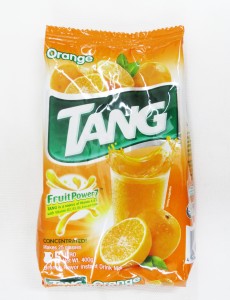 William A. Mitchell, a chemist, worked for General Foods for 35 years. He invented tang in 1957 but it was launched in the market after ttwwo years. This product couldn’t become popular until NASA popularized this! Here’s the reason,”how?”
William A. Mitchell, a chemist, worked for General Foods for 35 years. He invented tang in 1957 but it was launched in the market after ttwwo years. This product couldn’t become popular until NASA popularized this! Here’s the reason,”how?”
In 1962 Jon Glenn’s mercury flight and in 1965 Gemini program, tang was taken by astronauts in order to flavor the poor taste of water derived from life-support system. People thought that the tang was specially made for astronauts and these rumors spread out like fire. Immediately after these programs, “Tang” became very famous product.
4.Soft drinks
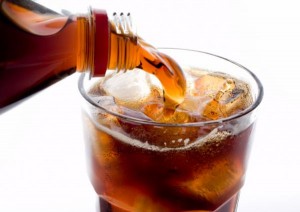 This word is commonly used to describe all sort of drinks that are non alcoholic. The alcoholic drinks are ,”hard drinks”.
This word is commonly used to describe all sort of drinks that are non alcoholic. The alcoholic drinks are ,”hard drinks”.
The word,”soft drink” was adopted for marketing purposes because the same product was selling under different names in different regions i.e. cola, soda, beverage, fizzy etc
5.Orange
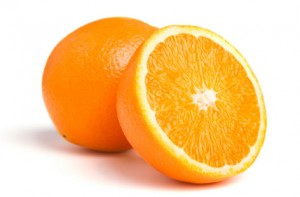 The color,”orange” was named after this fruit. This word was adopted from Spanish word,”naaranji” which is derived from the Sanskrit word,”narangaa” which means, “orange-tree”.
The color,”orange” was named after this fruit. This word was adopted from Spanish word,”naaranji” which is derived from the Sanskrit word,”narangaa” which means, “orange-tree”.
6.Garlic
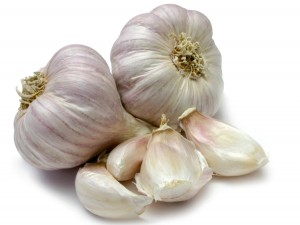 Allyl methyl sulffide is the active ingredient of garlic that is responsible for foul smelling. This smell is not only present in mouth but in every secretion of the body. This is because the sulfide compound has special affinity for gland cells. These cells uptake this compound from the blood stream and is excreted out through the ducts. Thus the characteristic garlic odor can be smelled even in the sweat.
Allyl methyl sulffide is the active ingredient of garlic that is responsible for foul smelling. This smell is not only present in mouth but in every secretion of the body. This is because the sulfide compound has special affinity for gland cells. These cells uptake this compound from the blood stream and is excreted out through the ducts. Thus the characteristic garlic odor can be smelled even in the sweat.
7.Coke
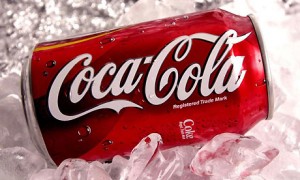 If one ingredient out of several is missing, a single can of coke can make you vomit! Yes, this is true. Here’s how
If one ingredient out of several is missing, a single can of coke can make you vomit! Yes, this is true. Here’s how
One can of coke contains 10 teaspoons of sugar that is 100% of your daily sugar requirement. This amount of sugar can make you vomit involuntarily for several hours. So, phosphoric acid is added to cut off the sweetness level to acceptable state.
8.Peach
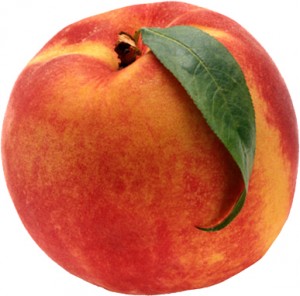 There is an almond-like seed inside the peach. It contains nut. This nut contains therapeutic agent called, “laetrile”. This chemically active agent has great potential of inducing apoptosis (programmed cell death) in the the tumor cells while leaving the healthy cells free. So it is one of very few fruits that has the anti-cancer activity.
There is an almond-like seed inside the peach. It contains nut. This nut contains therapeutic agent called, “laetrile”. This chemically active agent has great potential of inducing apoptosis (programmed cell death) in the the tumor cells while leaving the healthy cells free. So it is one of very few fruits that has the anti-cancer activity.
9.Jelly beans, candies and coated pills
 All of these contain the solid covering around them which keep the inner active ingredients preserved. These coatings are also called, “confectioner’s glaze” and these are derived from the outer covering of Asian beetle, lac bugs (laccifer lacca). This bug form shelters by secreting this chemical and form a small tunnel withing the bark of the tree. This shellac is scraped off the bark of the tree, washed with alcohol, melted and cooled to the room temperature and sold.
All of these contain the solid covering around them which keep the inner active ingredients preserved. These coatings are also called, “confectioner’s glaze” and these are derived from the outer covering of Asian beetle, lac bugs (laccifer lacca). This bug form shelters by secreting this chemical and form a small tunnel withing the bark of the tree. This shellac is scraped off the bark of the tree, washed with alcohol, melted and cooled to the room temperature and sold.
10.Coconut water
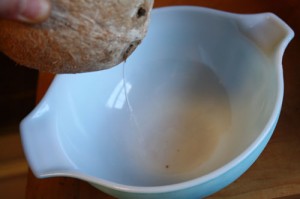 Coconut water bears so much resemblance with human plasma that it can be used as substitute of plasma in case of emergency. This is because the pH of this water is same as that of plasma and the contents are almost isotonic to human blood.
Coconut water bears so much resemblance with human plasma that it can be used as substitute of plasma in case of emergency. This is because the pH of this water is same as that of plasma and the contents are almost isotonic to human blood.
11.Peanuts
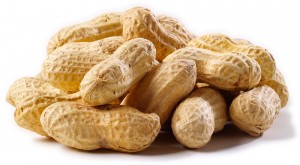 Peanuts can be used for making bombs! This is true because peanuts are cheap source of producing glycerine which is necessary for making the bombing material. Glycerine is added to the inert chemical substance by a chemical reaction and the resultant product attains the blasting character.
Peanuts can be used for making bombs! This is true because peanuts are cheap source of producing glycerine which is necessary for making the bombing material. Glycerine is added to the inert chemical substance by a chemical reaction and the resultant product attains the blasting character.
12.Red grapes
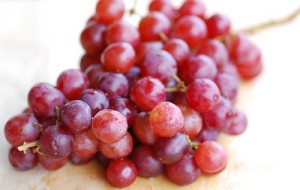 Red grapes contain greater quantity of anti-oxidants than green or purple grapes. And the organic red grapes contain even greater amount of anti-oxidant. The name of active anti-oxidant is ,”resveratrol”. This chemical is present in the skin of the grapes. The anti-oxidant fight against the active radicals that have the potential to damage the normal cells. But why red grapes have more quantity of anti-oxidant than others? Here is the reason,”Why?”
Red grapes contain greater quantity of anti-oxidants than green or purple grapes. And the organic red grapes contain even greater amount of anti-oxidant. The name of active anti-oxidant is ,”resveratrol”. This chemical is present in the skin of the grapes. The anti-oxidant fight against the active radicals that have the potential to damage the normal cells. But why red grapes have more quantity of anti-oxidant than others? Here is the reason,”Why?”
Fungal attack on the this plant induces a response in the fruit to synthesis more and more protective agent, just like our immune system synthesize immunoglobulins. The mechanism behind this is still to be discovered. However, organic red grapes contain greater amount of anti-oxidant because they are more prune to fungal attack in wild environment and repeated fungal attack further increases the amount of resveratrol.

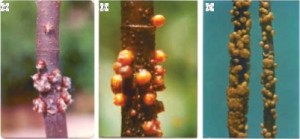
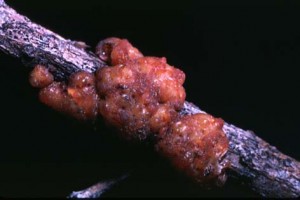


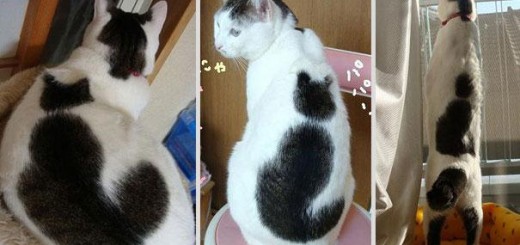
Leave your comments